Dwarf Irregular Galaxy NGC 4214 Imaged by Hubble WFC3

stsci_2011-14b May 12th, 2011
Credit: NASA, ESA, and the Hubble Heritage (STScI/AURA)- ESA/Hubble Collaboration Acknowledgment: R. O'Connell (University of Virginia) and the WFC3 Scientific Oversight Committee
This is a full-field image of the nearby dwarf galaxy NGC 4214 taken with NASA's Hubble Space Telescope. Episodes of star formation are revealed as the galaxy continues to form clusters of new stars from its interstellar gas and dust. The Hubble image reveals a sequence of steps in the formation and evolution of stars and star clusters, evident in the glowing gas surrounding bright stellar clusters. The young clusters of new stars appear within bright clumps of glowing gas. Each cloud glows because of the strong ultraviolet light emitted from the embedded young stars, which have formed within them due to the gravitational collapse of the gas. These hot stars also eject fast "stellar winds" moving at millions of miles per hour (thousands of kilometers per second), which plow into the surrounding gas. The radiation and wind from the young stars literally blow bubbles in the gas. The main object near the center of the galaxy is a cluster of hundreds of massive blue stars, each more than 10,000 times brighter than our Sun. A vast heart-shaped bubble, inflated by the combined stellar winds and radiation pressure, surrounds the cluster. The bubble will increase in size as the most massive stars in the center reach the ends of their lives and explode as supernovae. NGC 4214 provides a unique view of star formation in galaxies other than the Milky Way because of its proximity to us. Filters onboard Hubble also help to tell the story of star formation in this galaxy. Broadband filters expose light from older star populations and show the overall structure of the galaxy. NGC 4214 is not only small in size compared to the Milky Way, it also appears irregular in shape, with no defined disk or spiral arms. Ultraviolet filters show the intense stars that radiate ultraviolet light in the centers of the colorful nebulosity, which is in turn visible because of narrow-band filters that isolate specific gases such as hydrogen, nitrogen, and oxygen. This dwarf galaxy resides 10 million light-years away in the constellation Canes Venatici. The Hubble images were obtained in December 2009 with the Wide Field Camera 3 in ultraviolet and visible filters.
Provider: Space Telescope Science Institute
Image Source: https://hubblesite.org/contents/news-releases/2011/news-2011-14
Curator: STScI, Baltimore, MD, USA
Image Use Policy: http://hubblesite.org/copyright/
 Color Mapping
Color Mapping
| Telescope | Spectral Band | Wavelength | |
|---|---|---|---|

|
Hubble (WFC3) | Ultraviolet (UV) | 225.0 nm |

|
Hubble (WFC3) | Ultraviolet (UV) | 336.0 nm |

|
Hubble (WFC3) | Optical (B) | 438.0 nm |

|
Hubble (WFC3) | Optical (Hbeta) | 487.0 nm |

|
Hubble (WFC3) | Optical ([O III]) | 502.0 nm |

|
Hubble (WFC3) | Optical (y) | 547.0 nm |

|
Hubble (WFC3) | Optical (Halpha [N II]) | 657.0 nm |

|
Hubble (WFC3) | Optical (I) | 814.0 nm |
| December 22-25, 2009 | |||










- ID
- 2011-14b
- Subject Category
- C.5.1.6 C.4.2.1 C.5.2.2
- Subject Name
- NGC 4214
- Credits
- NASA, ESA, and the Hubble Heritage (STScI/AURA)- ESA/Hubble Collaboration Acknowledgment: R. O'Connell (University of Virginia) and the WFC3 Scientific Oversight Committee
- Release Date
- 2011-05-12T00:00:00
- Lightyears
- 10,000,000
- Redshift
- 10,000,000
- Reference Url
- https://hubblesite.org/contents/news-releases/2011/news-2011-14
- Type
- Observation
- Image Quality
- Good
- Distance Notes
- The distance to NGC 4214 is 10 million light-years (3.1 Mpc).
- Facility
- Hubble, Hubble, Hubble, Hubble, Hubble, Hubble, Hubble, Hubble
- Instrument
- WFC3, WFC3, WFC3, WFC3, WFC3, WFC3, WFC3, WFC3
- Color Assignment
- Blue, Blue, Blue, Blue, Green, Green, Red, Red
- Band
- Ultraviolet, Ultraviolet, Optical, Optical, Optical, Optical, Optical, Optical
- Bandpass
- UV, UV, B, Hbeta, [O III], y, Halpha [N II], I
- Central Wavelength
- 225, 336, 438, 487, 502, 547, 657, 814
- Start Time
- 2009-12-23T00:00:00, 2009-12-23T00:00:00, 2009-12-22T00:00:00, 2009-12-23T00:00:00, 2009-12-24T00:00:00, 2009-12-23T00:00:00, 2009-12-23T00:00:00, 2009-12-23T00:00:00
- Integration Time
- Dataset ID
- Notes
- D
- Coordinate Frame
- FK5
- Equinox
- 2000.0
- Reference Value
- 183.9026269050000053, 36.3406886511000025
- Reference Dimension
- 3848.0000000000000000, 3273.0000000000000000
- Reference Pixel
- 1393.7048187299999427, 323.9563598599997931
- Scale
- 0.0000109916418068, -0.0000109916418068
- Rotation
- 11.5102587468339301
- Coordinate System Projection:
- TAN
- Quality
- Full
- FITS Header
- Notes
- Creator (Curator)
- STScI
- URL
- http://hubblesite.org
- Name
- Space Telescope Science Institute Office of Public Outreach
- outreach@stsci.edu
- Telephone
- 410-338-4444
- Address
- 3700 San Martin Drive
- City
- Baltimore
- State/Province
- MD
- Postal Code
- 21218
- Country
- USA
- Rights
- http://hubblesite.org/copyright/
- Publisher
- STScI
- Publisher ID
- stsci
- Resource ID
- STSCI-H-p1114b-f-3848x3273.tif
- Resource URL
- https://mast.stsci.edu/api/latest/Download/file?uri=mast:OPO/product/STSCI-H-p1114b-f-3848x3273.tif
- Related Resources
- http://hubblesite.org/newscenter/archive/releases/2011/14
- Metadata Date
- 2022-07-06T00:00:00
- Metadata Version
- 1.2
Detailed color mapping information coming soon...








